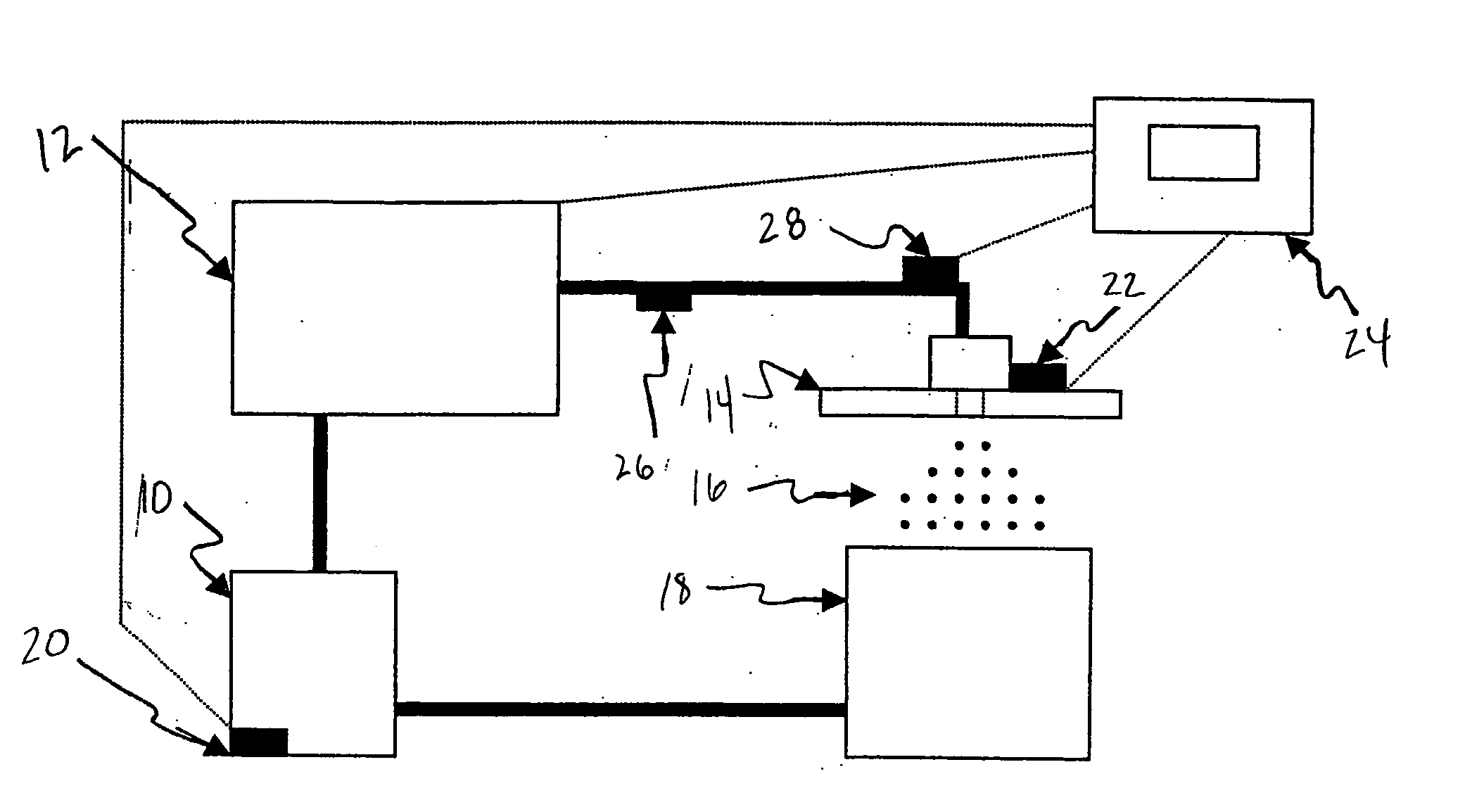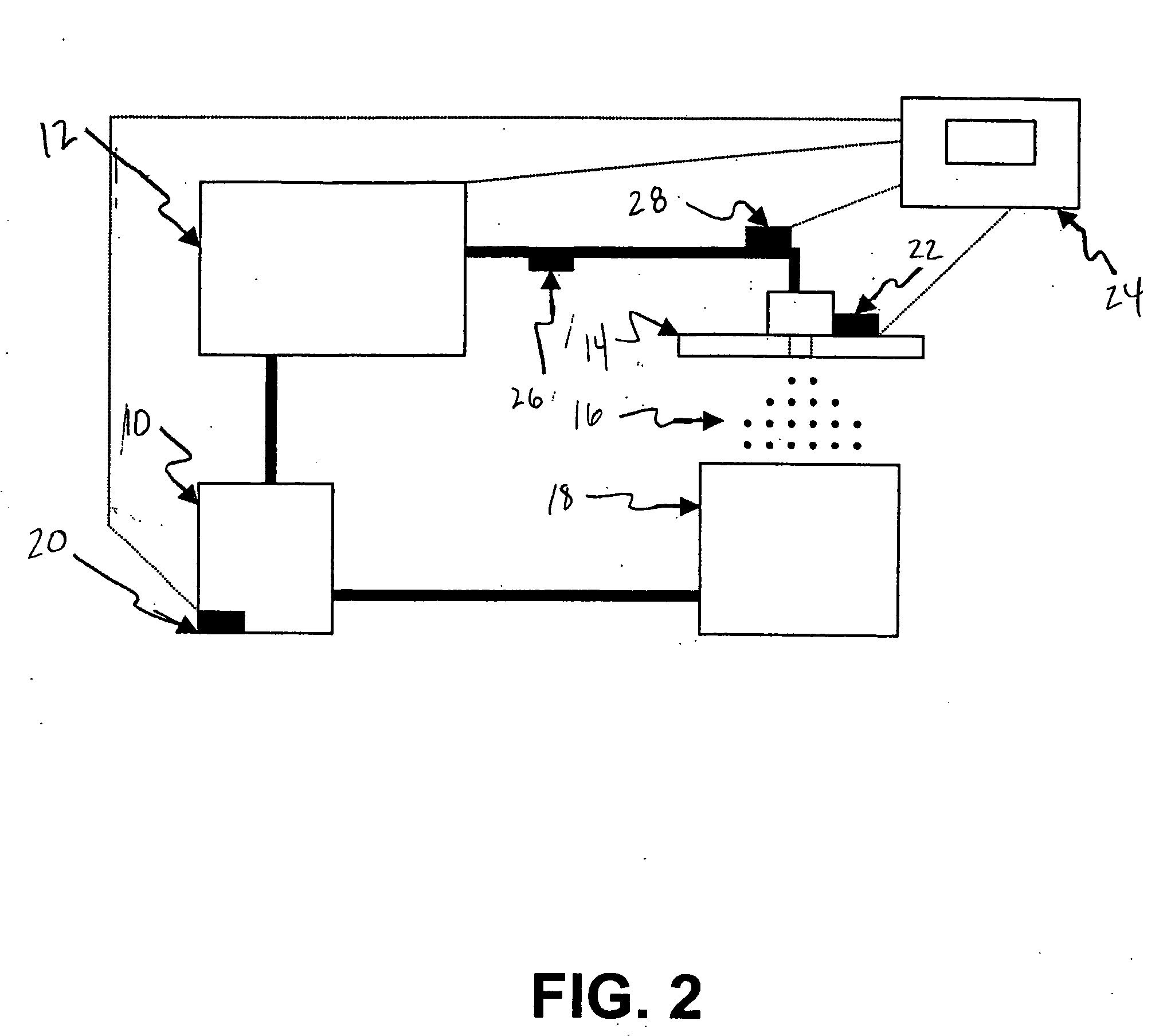System and method for determining atomization characteristics of spray liquids
- Summary
- Abstract
- Description
- Claims
- Application Information
AI Technical Summary
Benefits of technology
Problems solved by technology
Method used
Image
Examples
example no.1
EXAMPLE NO. 1
[0059] A number of fluids were sprayed through a TeeJet XR11004 fan nozzle. The fan nozzle tested had a 110° flow angle which refers to the extent of the fan-like shape within the X-Z axis plane. The nozzle also had a 0.4 gallon per minute flow rate at 40 psi liquid supply pressure. Fluid was supplied to the nozzle at 40 psi (276 kPa). A single chip accelerometer (Analog Devices ADXL 311) was mounted on the nozzle body to sense the vibration along the axis normal to the fan (the “Y” axis as shown in FIG. 3). Data were collected for 2 seconds and a Discrete Fourier Transform was performed on the data by an on-board microprocessor to produce the power spectrum of the signal.
[0060] Results for tap water, a viscous fluid (thick sugar syrup), a low surface tension fluid (water+1% dishwashing detergent) and a fluid with polymer-like properties (fat free salad dressing—with guar gum and other thickeners) are shown in FIG. 4. Differences in the spectra for the fluids were appa...
example no.2
EXAMPLE NO. 2
[0062] The potential simplicity and an inexpensive embodiment of the invention was demonstrated using a manually-actuated piston pump and close-coupled spray nozzle as shown in FIG. 5. A triaxial accelerometer (PCB Model 356A22) was coupled to the outlet of the spray nozzle. The integrated pump was a positive displacement piston pump that dispensed 0.8 ml / stroke. The nozzle was a fixed orifice producing a hollow cone spray. Four fluids were tested to determine the vibration characteristics and the resulting spray droplet size, as visualized by adding a dye to the spray liquid and photographing the spray deposit.
[0063] The reference fluid was municipal water. The test fluids were 40% ethyl alcohol, a commercial spray surface cleaner (Formula 409) and glycerin. Results for water appear in FIG. 6; results for ethyl alcohol appear in FIG. 7; results for the spray cleaner appear in FIG. 8; and results for glycerin appear in FIG. 9. A clear relationship between the relative ...
PUM
 Login to view more
Login to view more Abstract
Description
Claims
Application Information
 Login to view more
Login to view more - R&D Engineer
- R&D Manager
- IP Professional
- Industry Leading Data Capabilities
- Powerful AI technology
- Patent DNA Extraction
Browse by: Latest US Patents, China's latest patents, Technical Efficacy Thesaurus, Application Domain, Technology Topic.
© 2024 PatSnap. All rights reserved.Legal|Privacy policy|Modern Slavery Act Transparency Statement|Sitemap



